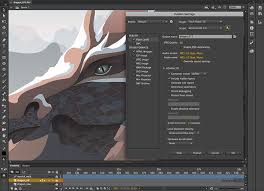The Art of Animation
Animation is a captivating form of visual storytelling that has the power to bring characters, objects, and worlds to life through movement. It is a versatile medium that can be used in various industries, from entertainment and advertising to education and gaming.
At its core, animation is about creating the illusion of motion through a series of still images shown in rapid succession. This technique allows animators to craft narratives, evoke emotions, and convey messages in ways that live-action footage cannot.
There are different types of animation techniques, including traditional hand-drawn animation, 2D vector-based animation, 3D computer-generated imagery (CGI), stop-motion animation, and more. Each technique has its unique characteristics and applications, making animation a diverse and dynamic art form.
Animation requires a combination of creativity, technical skill, and attention to detail. Animators must have a keen eye for movement, timing, and expression to bring their creations to life convincingly. Whether it’s a whimsical cartoon character or a realistic CGI creature, the success of an animation lies in its ability to engage and captivate audiences.
Besides entertainment purposes, animation plays a crucial role in education by making complex concepts more accessible and engaging for learners of all ages. It can simplify abstract ideas, visualise scientific processes, and enhance storytelling in educational content.
In the world of advertising and marketing, animation is used to create eye-catching visuals that grab viewers’ attention and leave a lasting impression. Animated advertisements have the flexibility to convey brand messages in creative ways while standing out amidst the sea of static images.
As technology continues to advance, the possibilities for animation are endless. Virtual reality (VR) and augmented reality (AR) are opening up new frontiers for immersive storytelling experiences that blur the line between fiction and reality. The future of animation holds exciting prospects for pushing boundaries and exploring innovative ways to connect with audiences.
Whether it’s bringing fairy tales to life on screen or visualising complex data through infographics, animation remains a powerful tool for communication and expression. Its ability to inspire wonder, evoke emotions, and spark imagination makes it an essential art form that continues to evolve with each frame.
Top 5 Tips for Creating Captivating Animations
- Make sure to provide a clear and engaging storyline for your animation.
- Pay attention to the details in your character design and animation movements.
- Use appropriate sound effects and music to enhance the viewing experience.
- Experiment with different animation techniques to find your unique style.
- Seek feedback from others to improve and refine your animations.
Make sure to provide a clear and engaging storyline for your animation.
When creating an animation, it is essential to provide a clear and engaging storyline that captivates the audience. A well-crafted narrative sets the foundation for the animation, guiding the flow of events and connecting viewers to the characters and themes presented. By developing a compelling storyline, animators can evoke emotions, build suspense, and leave a lasting impact on the audience. A strong narrative not only enhances the overall quality of the animation but also ensures that viewers are drawn into the world being portrayed, making the experience more immersive and memorable.
Pay attention to the details in your character design and animation movements.
When creating animations, it is crucial to pay close attention to the details in both character design and movement. The intricacies of character design, such as facial expressions, body language, and unique traits, can bring depth and personality to your creations. Similarly, focusing on subtle nuances in animation movements, like timing, pacing, and fluidity, can elevate the storytelling and emotional impact of your work. By meticulously crafting these details, animators can breathe life into their characters and make their animations more engaging and memorable for viewers.
Use appropriate sound effects and music to enhance the viewing experience.
When creating animations, it is essential to utilise appropriate sound effects and music to elevate the viewing experience. Sound plays a crucial role in setting the mood, enhancing emotions, and adding depth to the visual storytelling. By carefully selecting sound effects that complement the on-screen action and incorporating music that resonates with the narrative, animators can create a more immersive and engaging experience for viewers. The right blend of sound and music can evoke powerful reactions, strengthen storytelling impact, and leave a lasting impression on the audience.
Experiment with different animation techniques to find your unique style.
Experimenting with various animation techniques is a valuable tip for animators looking to define their unique style. By exploring traditional hand-drawn animation, 2D vector-based animation, 3D CGI, stop-motion, and more, animators can discover what resonates with them creatively and technically. Each technique offers its own visual language and possibilities, allowing animators to push boundaries, innovate, and ultimately develop a distinctive style that sets them apart. Embracing experimentation not only expands one’s skill set but also opens doors to new creative avenues and expressions in the dynamic world of animation.
Seek feedback from others to improve and refine your animations.
Seeking feedback from others is a valuable practice when it comes to improving and refining animations. By inviting constructive criticism and insights from peers, mentors, or audiences, animators can gain fresh perspectives that help identify areas for enhancement. Feedback not only highlights strengths but also pinpoint weaknesses, guiding animators towards making informed adjustments that elevate the quality of their work. Embracing feedback as a collaborative tool fosters growth, encourages innovation, and ultimately leads to the creation of more polished and impactful animations.
